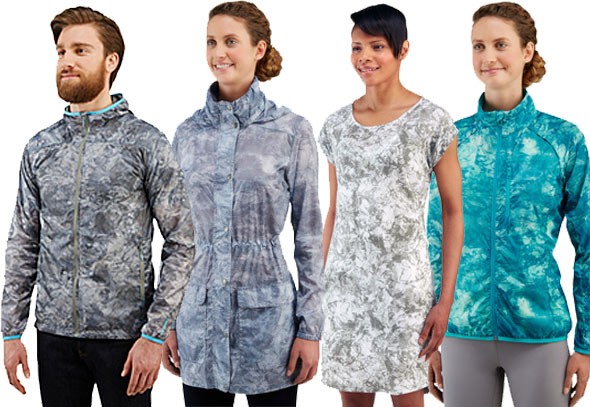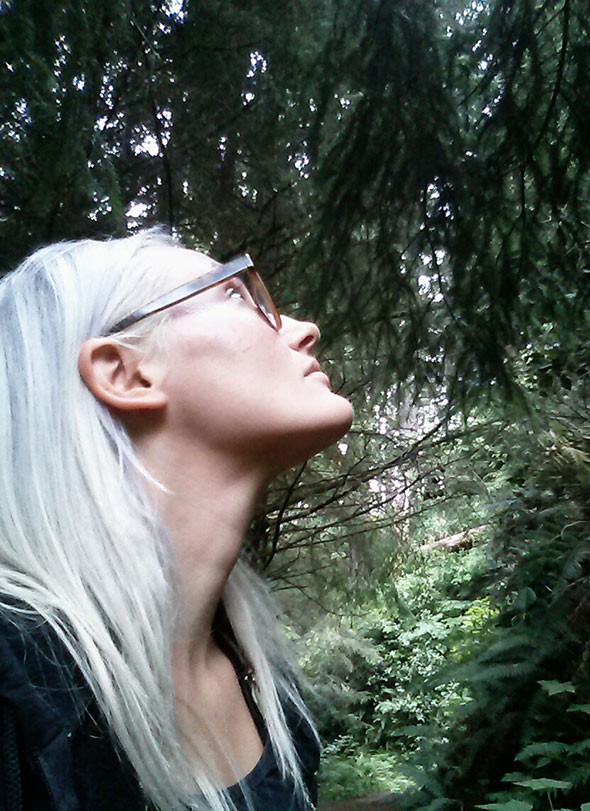Interview | Activewear Designer Anya Gorson
InspirationToday we interview Anya Gorson, an amazingly talented apparel designer with over 10 years of experience buying prints for activewear brands such as Columbia Sportswear and Merrell. We’ve worked with Anya at both Columbia and Merrell over the years so we’re excited to share her insights from the perspective of a print buyer.
When buying prints for sports apparel, are there any special things you are generally looking for? Is there a particular look to sports related prints as opposed to fashion prints?
Bright colors are really important in activewear so I look for prints that can carry brights well. I especially like to work with multi-color prints that have a placement for an accent color so the whole print doesn’t need to be bright. This is different from fashion and what I look for when designing a lifestyle collection that is worn as everyday street clothes where I would select something more subdued. It’s extra special to find a print that works for more than one product type like the one we bought from Pattern People for Merrell’s upcoming S16 collection. It made it into the outdoor collection and the lifestyle collection, we were even able to share it with the Menswear and Accessories Designers!


Above: Pattern People print and below, how it was used on Merrell’s products for Spring 16
(special shout-out to Mitch Zapp at Merrell for his design of the men’s jacket shown here.)
When you buy prints, what formats do you find most helpful for your creative process?
I love when a print house provides a low-res version of the art and allows time for the decision making process. I like to digitally fill the designs with the print to make sure it looks good. I often need to pitch my vision to someone on the business side and will use the low res version in a print/color/concept board to get sign off before purchasing the print. We often source prints from multiple locations, a combination of in-house design and print houses. I like the opportunity to lay out our favorite options together and edit down to the best options that look good together. I find that skipping any of these steps can result in buying an awesome print that never gets used because it doesn’t make sense with the seasonal strategy.
What are some prints that you’re wearing these days or gravitating towards?
Print mixing! I know it’s not new but I still love it. I’m wearing a combination of simple patterns together. Paisley, Foulard, Dots. I like to keep the color simple and mix the scale.
Do you ever envision the type of print that might live on a garment or do you think of it in terms of function first?
A print can actually be used to add function to a garment through application method, think visibility, reflectivity, breathability, etc. I don’t have a specific order. The development timelines require that I complete the garment designs before the print so I have some flexibility there. Inspiration is non-linear for me. I try to make space to ride the wave wherever it takes me. Sometimes an amazing print will inspire a concept for a whole collection and the print may be the centerpiece that pulls the idea together. Other times the print is the last thing I think about.
When commissioning a print, what do you look for in a print designer?
The designer must be reliable, creative, and a good communicator. The world is full of talented designers but not everyone can deliver to a brief and on time. I usually judge the designer based on his or her existing collection and reputation then eventually take a risk to work with them for the first time. Once I have someone good I will use them repeatedly.
How do you come up with a print story vision for a collection and how do you communicate that vision to a print designer?
The print story is always in harmony with the brand and the seasonal theme. The theme may develop around an experience, function, current event, etc. I start looking for prints that fit the theme or write a brief for a surface designer to create one within the theme. If I trust the designer I may confidentially send them my concept boards for reference. Sometimes there is a lot of freedom in the brief and other times it is very specific.
Check out Anya’s portfolio
-Claudia


